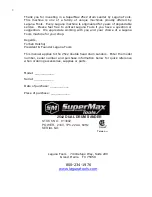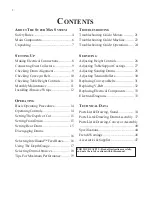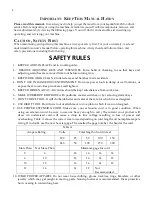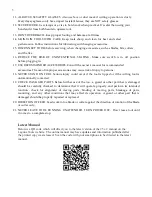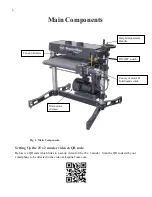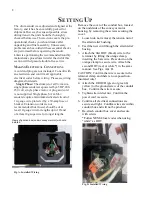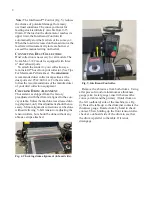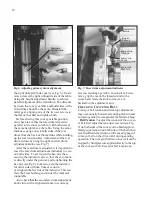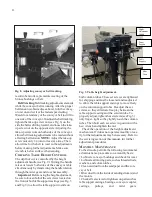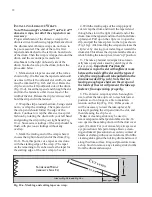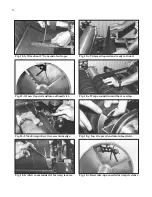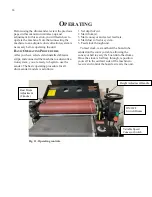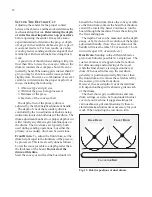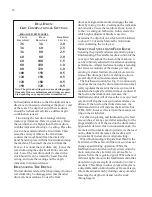
15
R
EAR
D
RUM
F
RONT
D
RUM
C
ONVEYOR
B
ELT
S
ETTING
T
HE
D
EPTH OF
C
UT
Adjusting the sander
for the proper contact
between the abrasive and the stock determines the
mechanical depth of cut.
Determining the depth
of cut is the most important set-up procedure
before operating the
sander. It may take some
experimentation to determine the prop- er depth
of cut, given the variables of abrasive grit, type of
wood, and feed rate. For best results, use scrap
wood to practice sanding and to develop skill and
familiarity with the machine before doing finish
work.
A good rule of thumb when sanding with grits
finer than 80 is to raise the conveyor table so the
drum(s) contacts the workpiece but still can be
rotated by hand. When using grits coarser than 80
grit, you may be able to raise the conveyor table
slightly more. However, a combination of several
variables will determine the proper depth of cut
to use, including the following:
1.
Abrasive type and grit size.
2.
Width of the piece being processed.
3.
Hardness of the piece.
4.
Feed rate of the conveyor belt.
The depth of cut of the primary drum is
adjusted by the table height adjustment handle.
The depth of cut of the secondary drum is
controlled by the two adjustment knobs (analog
indicators) located on both sides of the drum. The
drum adjustment knobs allow proper depth of cut
with virtually any abrasive grit combinations on
the drums. The two drums are typically both
used during sanding operations, but either the
primary or secondary drum can be used alone.
Front Drum.
To adjust the front drum, set the
drum height equal to the thickness of the piece to
be processed. This is most easily done as follows:
Lower the conveyor table to a depth greater than
the thickness of the board.
Do not start the
drum at this time.
Start the conveyor and feed the board until it is
beneath the front drum. Raise the conveyor table
so the front drum contacts the board but the drum
can still be rotated by hand. Continue to run the
board through the machine. This is the setting for
the first sanding pass.
The depth of cut can be measured on the depth
gauge, or by fractions of a revolution of the height
adjustment handle. (Note: One revolution of the
handle will raise the table 3/32 of an inch; 1/3 of a
turn will equal 1/32 of an inch, etc.)
Rear Drum.
Sanding with a different abrasive
grit on each drum is possible in a single pass. The
coarser abrasive is wrapped on the front drum
for dimensioning and surfacing of the wood,
while the finer abrasive is wrapped on the rear
drum. When used in this way, the rear drum
generally is positioned just slightly lower than
the front drum so it removes the scratches left by
the coarser grit on the front drum.
However, the exact depth of cut of the rear drum
will depend on the specific abrasive grits on each
of the drums.
The chart shows grit combinations and rear
drum settings, can also be found under the dust
cover of your machine. It suggests settings for
various abrasive grit combinations; try these to
start and make adjustments as necessary for your
work. When adjusting the rear drum, turn
Fig. 12. Relative positions of dual drums.
Содержание SuperMax 25x2
Страница 1: ...OWNERS S MANUAL 25x2 SuperMax Drum Sander LagunaTools com...
Страница 36: ...36 STAND ASSEMBLY...
Страница 39: ...39 DUAL DRUM HEAD ASSEMBLY...
Страница 43: ...43 CONVEYOR MOTOR...
Страница 45: ...45 CS DE S CURIT...


